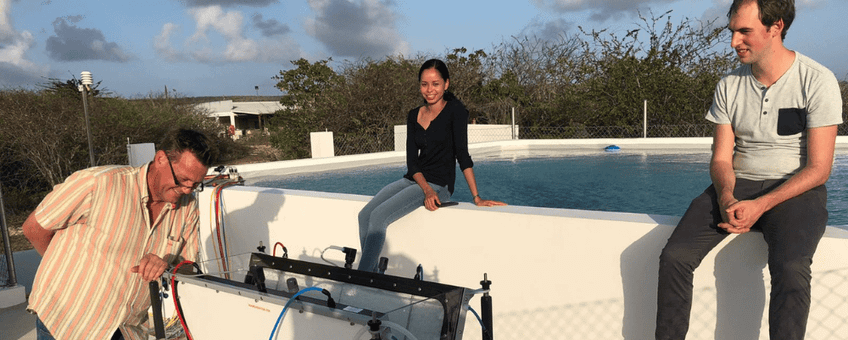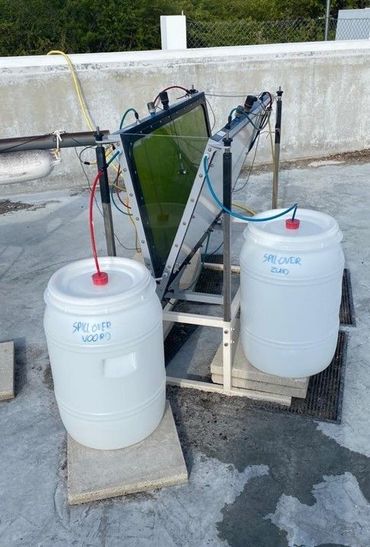
The future is green: innovations in algae
Dutch Caribbean Nature Alliance (DCNA)A study by Wageningen University explored the outdoor cultivation of a native green alga, Picochlorum sp., in a novel V-shaped photobioreactor. Based on Bonaire, this innovative system was designed to capture and dilute sunlight efficiently, even under the intense light conditions typical of low-latitude regions like the Caribbean. The research demonstrated high biomass productivity and photosynthetic efficiency without the need for temperature control, even when reactor temperatures reached between 35 °C and 45 °C. These findings underscore the potential of microalgae as a viable, sustainable resource for the Dutch Caribbean, particularly in environments where traditional agricultural practices may not be feasible.

Impacts
The environmental implications of this research are profound. Microalgae cultivation, as demonstrated in the Bonaire study, offers a method to reduce carbon emissions and combat climate change. Unlike traditional crops, microalgae can be grown on non-arable land using seawater, making it an environmentally friendly alternative. This aligns with the Dutch Caribbean’s goals of preserving its unique biodiversity while advancing sustainable practices. The ability to cultivate microalgae without competing for freshwater or arable land is particularly important in island environments where resources are limited.
Renewable energy and food production
Microalgae may also hold significant promises for renewable energy production. The biomass produced from these algae can be converted into biofuels, providing a sustainable energy source that could potentially help reduce the Dutch Caribbean’s dependence on imported fossil fuels. Diversifying energy sources with microalgae not only enhances energy security, but also contributes to a more resilient and sustainable energy grid.
Picochlorum sp., the native microalgae species that was isolated on Bonaire, may also be used for food purposes. Its biomass is characterized by a high protein content and a high content of healthy fats, making it a potentially beneficial component in the diet of animals and humans. The cultivation and application of microalgae in food and feed can help increase local food production and reduce the dependence on imports from abroad.
Blueprint for the future
The research conducted on Bonaire is more than a scientific achievement, it is a blueprint for a sustainable and resilient future for the Dutch Caribbean. By harnessing the potential of microalgae, the region can address both its environmental and economic challenges. As the world moves towards a greener future, the Dutch Caribbean has the opportunity to lead by example, showing how innovative solutions like microalgae cultivation can contribute to a more sustainable and prosperous future. The findings from Bonaire are a call to action, encouraging the region to embrace these opportunities and build a resilient future for generations to come.
More information
- You can read more by visiting the website of the Dutch Caribbean Biodiversity Database.
Text: Dutch Caribbean Nature Alliance
Photos: Rocca Chin-On
